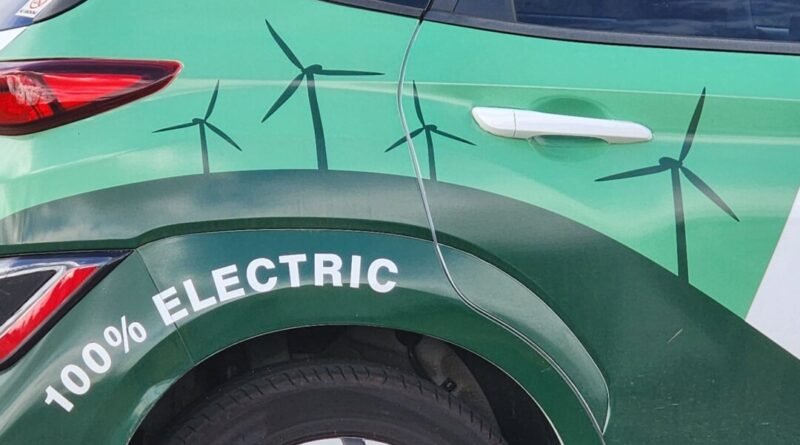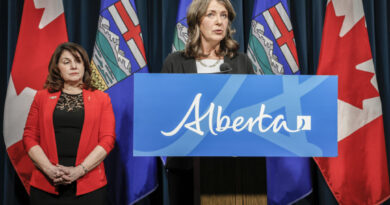Energy Analyst Warns of Potential Mass Blackouts in Australia if Political Disagreement on Energy Issues Persists
Saul Kavonic believes that the ongoing fluctuations in policy at both federal and state levels are significantly harming Australia’s economic prosperity.
Australia must engage in a serious conversation about diversifying its power grid, while reevaluating its rapid push towards net zero, to prevent a major catastrophe in the country’s electricity supply.
Leading energy and resources analyst Saul Kavonic holds this opinion, stating that the constant policy changes by governments are greatly impacting the nation’s economic wellbeing.
He warns that this could lead to widespread power outages and job losses.
“The slow-moving disaster in our energy market that was looming on the horizon is now directly in front of us,” said Mr. Kavonic, who leads integrated energy research at MST Marquee, in an interview with The Epoch Times.
“The likelihood of a significant energy security incident in the next few years is now more probable than possible,” added the former Credit Suisse analyst.
Opposition politicians from the Liberal-National Coalition argue that neglecting Australia’s natural resources like coal, gas, oil, and uranium could stifle market competition, increase inflation, and raise the cost of living, potentially leading to job losses.
On the other hand, Labor lawmakers argue that the world is facing an environmental crisis, which is why the Albanese government is committed to achieving net-zero greenhouse emissions by 2050.
To achieve this target, Australia is currently undergoing a significant transformation of its energy grid, with $20 billion (US$13.5 billion) allocated under the Rewiring the Nation program—a total transition estimated to cost over $100 billion by Net Zero Australia.
Mr. Kavonic believes that Australia is rushing too quickly towards relying solely on wind and solar power, aiming for a 43 percent reduction in emissions by 2030.
“When you see a coal train pass by on the Capricorn Highway, remember that it carries about $5 million in wealth for our nation. Each train helps support around 40 workers’ wages in the coal industry.”
Is Waiting for an Energy Catastrophe the Right Strategy?
The push to replace coal-fired power stations with renewable energy sources has already strained the electricity infrastructure.
The Australian Energy Market Operator predicts that the country’s energy transition will necessitate approximately 10,000 kilometers (6,200 miles) of new transmission lines by 2050.
It is this rapid shift away from traditional fossil fuels like coal, gas, and oil towards wind and solar energy sources that concerns Mr. Kavonic, who fears that the demand for energy could soon surpass supply.
“The impending energy security crisis will be the wake-up call that we should’ve heeded years ago,” he remarked.
“Major energy security interruptions will have substantial economic repercussions, impacting jobs and livelihoods.
“We shouldn’t have reached this point. Industry insiders hold a much graver view of our energy security and cost outlook for the next 3–5 years than ever before.
“It’s crucial to remember that our energy system is managed by engineers, not politicians.”
The Government’s Confidence in the Net Zero Rollout
The Albanese government is resolute in its commitment to transitioning the country to renewables to combat climate change.
“Many of Australia’s existing energy assets, such as coal-fired power plants, are increasingly unreliable and slated for closure in the coming years. Renewable energy provides the most cost-effective and low-emission replacement for these facilities,” states the Department of Climate Change, Energy, the Environment, and Water.
Minister for Climate Change Chris Bowen is satisfied with the progress made in the energy transition.
“Australia is well on its way to revamping its energy system,” he declared.
“Renewables temporarily accounted for 72 percent of the National Energy Market in 2023, with an average penetration of just under 40 percent.
“Half of the necessary 5,000 kilometers of transmission lines by 2030 are already under construction.
“Over 60,000 individuals could be directly employed in building and maintaining the new energy infrastructure between now and 2050.
“Coal is becoming less reliable, more expensive, harder to maintain, and less competitive compared to power sources.”
The Coalition’s Nuclear Policy
Contrastingly, federal Opposition Leader Peter Dutton recently announced that his party plans to construct seven nuclear sites across five states if elected.
These sites include Callide and Tarong in Queensland, Liddell and Mount Piper in New South Wales, Loy Yang in Victoria, Port Augusta in South Australia, and Muja in Western Australia.
The Commonwealth Scientific and Industrial Research Organisation has expressed caution, estimating that the first large-scale nuclear plant in the nation could cost up to $17 billion (US$11.5 billion) and wouldn’t be operational until at least 2040.
However, Mr. Kavonic insists that nuclear energy must be part of the conversation regarding Australia’s future energy sources to meet the growing demands.
“The rate at which renewables have penetrated Australia over the past few years has significantly slowed down,” he observed.
“This slowdown is despite the most pro-renewables policy in place over the last two years.
“This indicates that the rollout of renewables is facing numerous challenges related to social acceptance, regulatory approvals, transmission infrastructure, and costs.”
Meanwhile, Minister Bowen pointed out that renewables are preferred by investors over nuclear energy.
“Three-quarters of all power generation investments globally are in renewable energy sources,” he noted.
“In solar power alone, the world installed 440GW of capacity last year, surpassing the cumulative nuclear capacity built over decades of investment.
“By early 2025, renewable energy will surpass coal as the primary global energy source, while coal, gas, and nuclear will all see decreased market shares.
“Nuclear and coal combined represent only 16 percent of new power investments worldwide.”
Urgent Action Needed on Nuclear Sites
Mr. Kavonic stressed that plans to build nuclear plants should not be delayed due to concerns about their completion being too far in the future.
He argued that committing to the planning process now would be more beneficial for Australia’s economic future than the current policy flip-flops between renewables and nuclear energy at the federal and state levels.
“Developing a large gas project, from exploration to operation—like LNG projects—typically takes over 10 years,” he emphasized.
“This is why we can’t afford to keep changing policies every 18 months, as has been the case for the past decade.
He acknowledged that the nuclear industry would take longer to establish in the country due to the existing nuclear ban.
“Had this ban not been in place, we could have laid the groundwork for the necessary structures, giving us a head start,” he stated.
“The energy sector is in disarray, and we will require all available energy technologies to meet our expected demands.”
Nuclear power plants operate in 32 countries, with Australia lagging behind in embracing it as a primary energy source, according to the Climate Council.
“Australia has never built a nuclear power station. As a result, we are not prepared to launch a nuclear energy industry,” the council explained.
“Before we can even consider this, laws and regulations at state and federal levels must be established, funding in the billions secured, and a large, skilled workforce trained.
“The nuclear industry’s own analysis shows that power stations take an average of 9.4 years to build—and with no local experience in the nuclear industry, Australia’s first nuclear power plant will likely take much longer.
“In contrast, major wind and solar projects require just one to three years for completion.”





